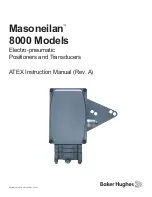
“The Survivor”
A 80 meter QRP SSB transceiver
●
Up to ~ 8 watts pep @ 13.8V +/- 50 kHz.
●
0.2 uV receiver sensitivity
●
Up to 350 kHz receiver tuning range
●
8 ohm 500 mw speaker output.
●
“Tune” and CW modes
●
50 ma Rx current (with optional Digital Dial)
●
small size 6” x 4” x 1.5”, 11.5oz.
●
13.8V at 2A min recommended power supply
Yahoo user group at hendricks_SSB
Manual revised 2-28-16
Operation:
Controls:
Controls consist of Volume, Fine and Main (course) tuning.
Volume:
Set the volume control to a comfortable listening level. The AGC will hold the audio level to this volume for all but the weakest signals. The
AGC has a slightly delayed response to keep it from overshooting when a large signal appears. This results in a momentary “thump”. Without
the slight delay, all audio would be lost until the AGC could recover from overshooting, which could take several seconds.
Main tuning:
Main tuning has about a 350 kHz range in a single turn of the knob. This much range is a bit touchy to tune in a signal, so main tuning is
augmented by a fine tuning control. NOTE: Tuning is “backwards”. Turning the tuning knob clockwise decreases frequency.
Fine tuning:
The fine tuning control has about a 30 kHz range, allowing you to tune between several near-by stations and to compensate for any minor
drift the VFO has during operation.
Microphone:
An “electret” microphone element is required. The rig supplies the power needed for the mic. A suitable, low cost microphone is
available from www.QRPKITS.com
Push To Talk (PTT):
Transmitting is initiated by pushing the PTT button on the microphone and then talking (duh). The PTT switch is also used to activate “tune”
and “CW” modes.
Tune up mode:
Most 80 meter antennas have a fairly narrow bandwidth so therefore require an antenna tuner which needs to be readjusted every so often
as you move up or down the band. Since a steady carrier works better then whistling into the mike to get a signal, a steady carrier or “tune
mode” is built into the rig.
Tune mode is activated by:
1.
A
very short
push and release of the PTT switch on the microphone, < 1/2 second.
2.
A “beep” will sound in the audio output, announcing the tune mode is now active.
3.
Using the PTT will now activate a 600 Hz tone which is injected into the microphone circuit to modulate the rig. The tone is also
heard in the speaker when the rig is transmitting. Transmit power is typically about 5 watts in tune mode, but will vary depending
on the microphone gain setting.
4.
To exit Tune mode, perform another
very short
push and release the PTT switch.
5.
A double beep will sound in the audio output to announce the tune mode is no longer active.
CW [Morse] mode:
The Survivalist can be operated in CW mode thanks to the Tune mode and microprocessor control of the T/R sequencing in the transceiver.
The difference between CW and Tune mode is that in CW mode, the transceiver must respond to quick changes in the state of the PTT
switch and stay in the CW mode. Once enabled, CW mode can only be cleared by turning the rig off, then back on again.
CW mode is enabled by keying the character “H” with the PTT at between 5 and 20 wpm. This allows activating CW mode with either a
straight key or external paddle. There will be no annunciating side tone until CW mode is enabled, so you have to mentally count the key
taps to enter the mode. If not enough pulses are detected, the rig may enter Tune mode instead of CW mode. There just has to be four on/off
pulses detected in less than ½ second to enter CW mode. When CW mode is detected and enabled, the audio output will annunciate “CW”.
The Survivalist will now operate as a CW transceiver, allowing for cross mode communication in the phone band.
1
Manual revised 20160229
Summary of Contents for The Survivor
Page 18: ...18 Manual revised 20160229...


































